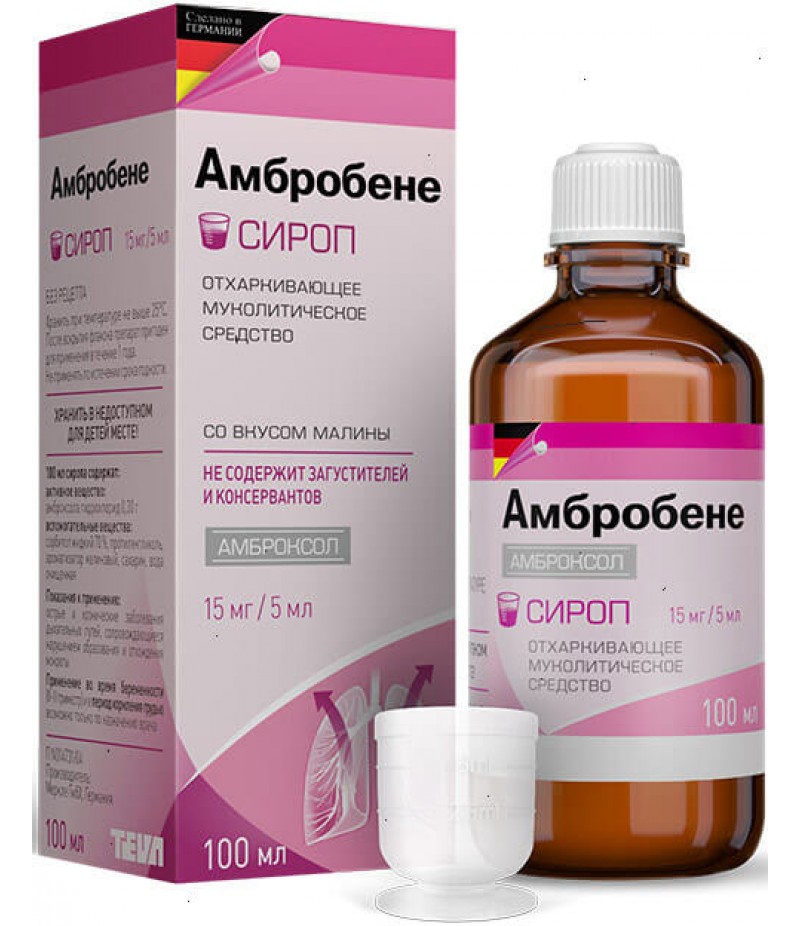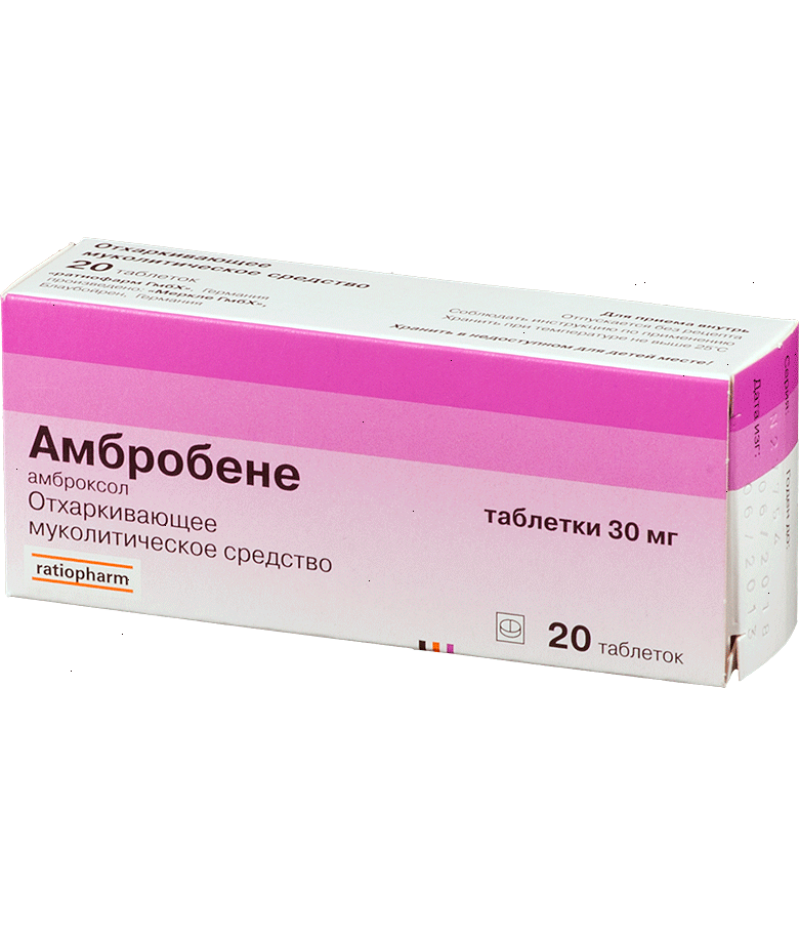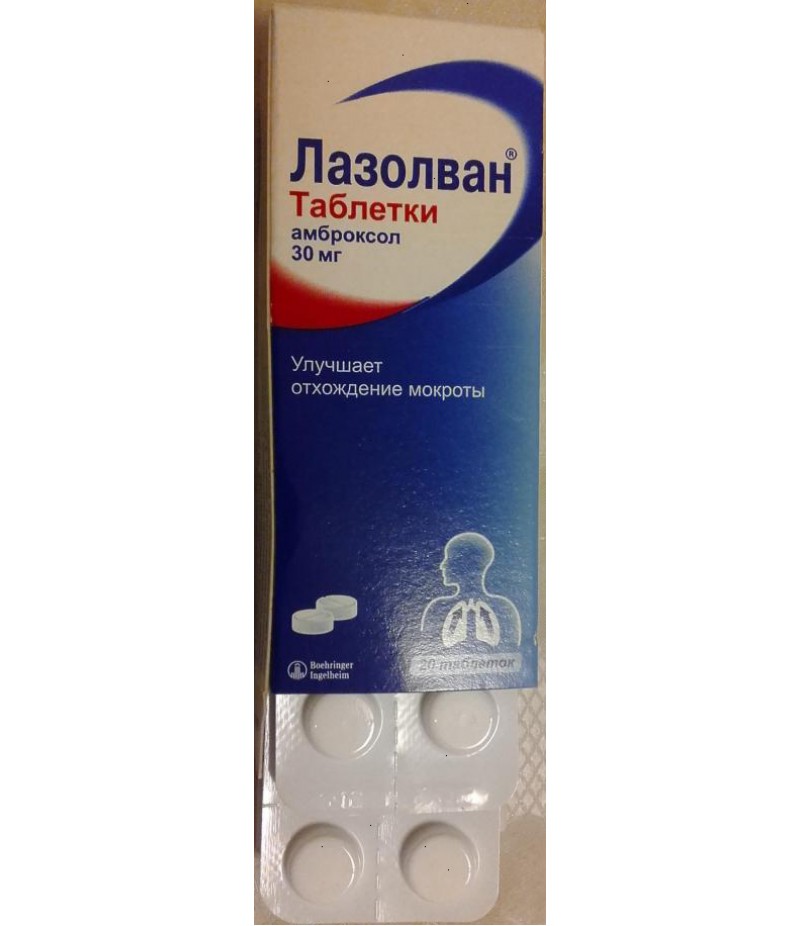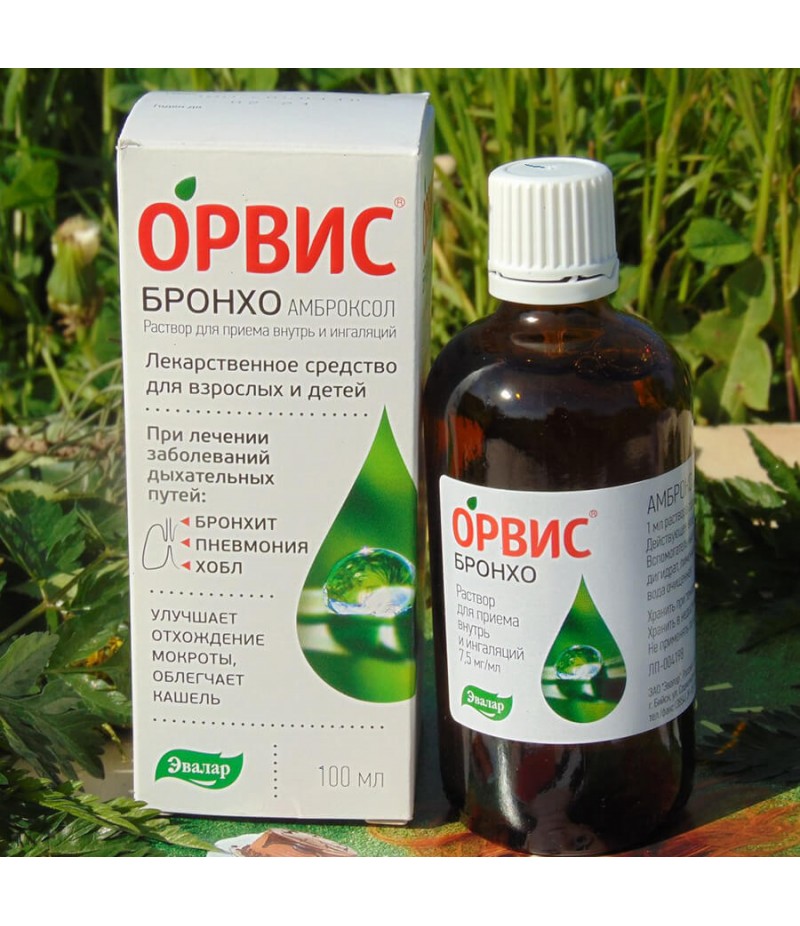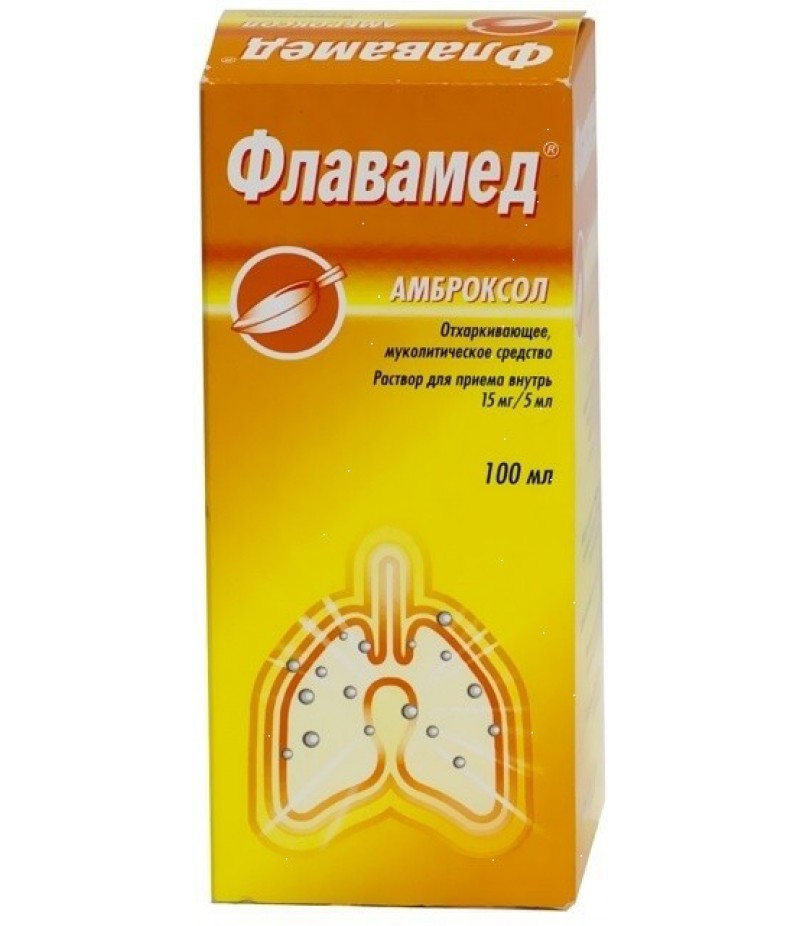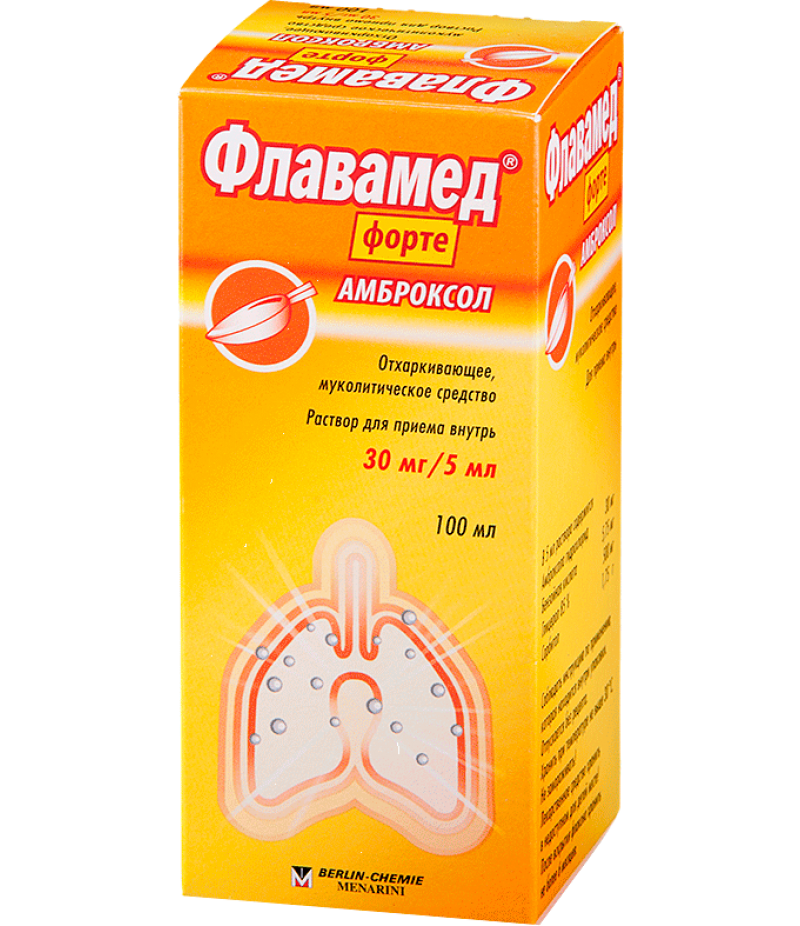Ambrobene syrup 15mg/5ml 100ml
- $17.77
- 3 or more $17.53
- Availability:In Stock
Ambrobene syrup user manualTo buy Ambrobene syrup just add it to your cartSee also - Ambrobene tabletsCompositionActive substance: ambroxol hydrochloride - 15 mg / mlExcipients: 70% liquid sorbitol - 60 g; &..
Tags: syrup
Ambrobene syrup user manual
To buy Ambrobene syrup just add it to your cart
See also - Ambrobene tablets
Composition
Active substance: ambroxol hydrochloride - 15 mg / ml
Excipients:
70% liquid sorbitol - 60 g;
Flavor crimson - 0.1 gr;
Propylene glycol - 5 g;
Saccharin - 0,01 gr;
Purified water - 49.44 gr.
Packaging
Vial of dark glass, 100 ml (1), measuring cup, cardboard tutu.
Pharmacodynamics of Ambrobene syrup
Ambroxol (benzylamine) is an organic compound, which is a metabolite of bromhexine. It differs from it by the presence of hydroxyl and the absence of a methyl group. Has an expectorant, secretolitic and secretory effect. The therapeutic effect occurs 30 minutes after taking the drug. Duration of action, depending on the dose taken, 6-12 hours.
In the course of preclinical studies it was found that Ambroxol (syrup) has a stimulating effect on the serous glandular cells of the bronchial mucosa. Activates the work of ciliated epithelium, reduces the viscosity of sputum, normalizes mucociliary transport (cleaning the surface of the mucous membrane from various foreign bodies). Providing direct influence on Clark cells located in the bronchioles of the lungs and alveolar pneumocytes of type II, Ambroxol promotes the activation of the surfactant (a surfactant that prevents the alveolar depletion on expiration).
In animal and cell structures it was found that the preparation stimulates the formation and secretion of a substance active on the surface of the bronchi and alveoli of an adult and embryo. There is evidence that Ambroxol has an antioxidant effect. When used in conjunction with antibacterial drugs (doxycycline, erythromycin, amoxicillin and cefuroxime) contributes to an increase in their concentration in bronchial secretion and sputum.
Pharmacokinetics
When administered orally, Ambroxol is quickly and almost completely absorbed from the gastrointestinal tract into the tissue, accumulating mainly in the lungs. The maximum concentration reaches in 1-3 hours.
Absolute bioavailability, due to biotransformation of the drug substance, decreases by about 1/3. Dibromanthral acid and glucuronides, formed as a result of per-systemic metabolism, are excreted by the kidneys.
Binding to plasma proteins - 80-90%. 90% of the drug is excreted as metabolites by the kidneys, 10% - unchanged. Due to the high connection with plasma proteins, a large initial volume of distribution and a slow redistribution from tissues to the blood during forced diuresis and dialysis, no significant drug release occurs.
In severe liver pathologies, Ambroxol clearance is reduced by 20-40%. In severe renal disorders, T1 / 2 metabolites are increased.
Ambroxol is able to penetrate into the cerebrospinal fluid, pass through the placenta and enter the breast milk.
Indications for use
Acute and chronic pathology of the respiratory system, which occur with impaired spitting and spitting;
Acute bronchitis;
Chronic bronchitis, unspecified etiology;
Bronchoectatic disease;
Bronchial asthma;
Chronic obstructive pulmonary disease (COPD);
Bacterial pneumonia, not elsewhere classified.
Dosage
The duration of treatment is chosen strictly individually, taking into account the natural course of the pathological process. Without the appointment of a doctor, the drug is not recommended for taking more than 4-5 days. During the period of application of the drug, the patient is given ample drinking (sputum liquation requires the intake of a large amount of liquid).
Syrup Ambrobene taken after eating, using a measuring cup for dosing.
Children under 2 years: 1/2 measuring dishes (2.5 ml) 2 times a day (daily dose of 15 mg Ambroxol);
Children from 2 to 6 years - 1/2 measuring dishes (2.5 ml) 3 times a day (daily dose of 22.5 mg Ambroxol);
Children from 6 to 12 years - 1 measuring cup (5 ml) 2-3 times a day (daily dose of 30-45 mg Ambroxol);
Children older than 12 years and adults the first 3 days of treatment - 2 measuring cups (10 ml) 3 times a day (90 mg Ambroxol). In the absence of therapeutic effect, adult patients are allowed to increase the dose to 4-dimensional cups (20 ml), taking the drug 2 times a day (60 mg Ambroxol).
Side effects of Ambrobene syrup
From the side of the digestive tract: abdominal pain, nausea, vomiting, diarrhea, constipation (from ≥0.1% to <1%);
Allergic reactions: skin rash, itching, hives, angioedema (from ≥ 0.1% to <1%);
Anaphylactic reactions, including anaphylactic shock (<0.01%);
General disorders: headache, weakness, febrile state (from ≥0.1% to <1%);
Other disorders: rhinorrhea, drying of the oral mucosa and respiratory tract, dysuric disorders, exanthematous eruptions (from ≥0.1% to <1%).
Contraindications to use
Hypersensitivity to the components of the drug;
Individual intolerance to fructose;
Glucosegalactose malabsorption;
Deficiency of isomaltose / sucrose;
I trimester of pregnancy.
Patients with increased sputum production (fixed cilia syndrome), impaired motor function of the bronchi, exacerbation of peptic ulcer and 12-n. guts, in the II and III trimesters of pregnancy and lactation with the use of the drug should be strictly observed the rules of admission and precautions.
Particular caution should be observed in severe renal and hepatic pathologies. In this situation, the Ambrobene syrup should be taken in a smaller dose, or between the doses of the remedy, large intervals are maintained.
To date, medicine does not have accurate data on the use of the drug in the first 28 weeks of pregnancy. In the second and third trimesters, the use of a drug should only be carried out with the permission of the doctor, after carefully weighing the ratio of the intended benefit of therapy to the mother and the potential risk to the fetus.
The use of syrup Ambrobene by women during breastfeeding has also not been adequately studied. Therefore, the decision on the appropriateness of the use of medicament should be taken by the attending physician, taking into account the risk to the child and the expected benefit for the mother.
When carrying out experiments on animals, it was found that Ambroxol does not have a teratogenic effect (does not disturb the processes of embryogenesis), is reabsorbed from human milk.
Interaction syrup Ambrobene with other medicinal products
With the simultaneous use of Ambroxol syrup with other antitussive drugs that inhibit cough reflex, sputum stagnation may occur, leading to the development of sufficiently dangerous conditions. Therefore, such combinations of drugs should be selected with extreme caution.
With the combined use of Ambroxol and antibacterial drugs (amoxicillin, erythromycin, cefuroxime and doxycycline), there is a significant increase in the bronchial secretion of the concentration of etiotropic components.
Due to the fact that the difference between the pH of solutions can cause the precipitation of Ambroxol base (pH 5), it is not recommended to use the preparation together with solutions whose pH exceeds 6.3.
Special instructions for admission
At the slightest changes from the skin and mucous membranes, the patient should stop taking the drug and seek medical advice.
The sweetener sorbitol, which is part of the syrup, has a slight laxative effect. At the same time, the caloric content of sorbitol is 2.6 kcal / g. One measuring cup contains 2.1 grams of sorbitol.
Children who have not reached the age of 2 syrup Ambrobene can be used only with the permission of a doctor.
Data on the impact on the ability to drive vehicles and manage various mechanisms for today is not available.
Overdose
At an overdose of a preparation of signs an intoxication was revealed. Perhaps the development of diarrhea and the appearance of signs of nervous excitation. When taking excessively large doses, there may be a decrease in blood pressure, increased salivation, nausea and vomiting. In this situation, in the first 1-2 hours after use, the affected person should make gastric lavage, and, if necessary, apply other methods of intensive care. The patient is then given symptomatic treatment.
Storage conditions
Store in a dark place inaccessible to children, at a temperature not exceeding 25 ° C.
Shelf life
The drug Ambrobene in the form of a syrup is suitable for use for 5 years from the date of release. After opening the bottle - 1 year. Use the product at the expiration date indicated on the package, it is prohibited.
Terms of sell
To buy syrup Ambrobene you don't need a prescription.

